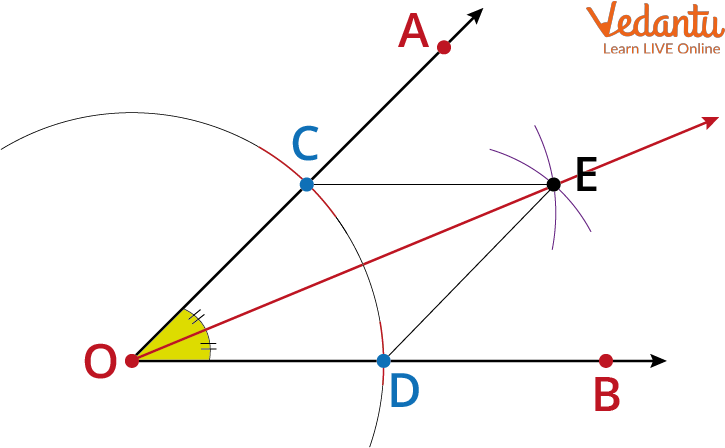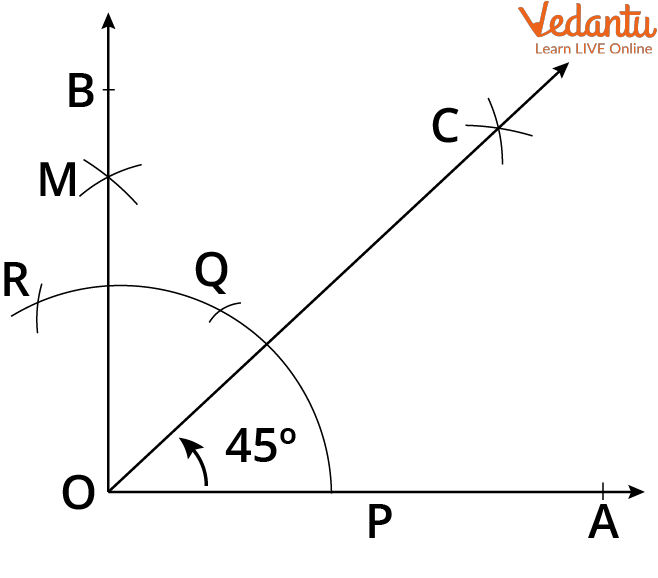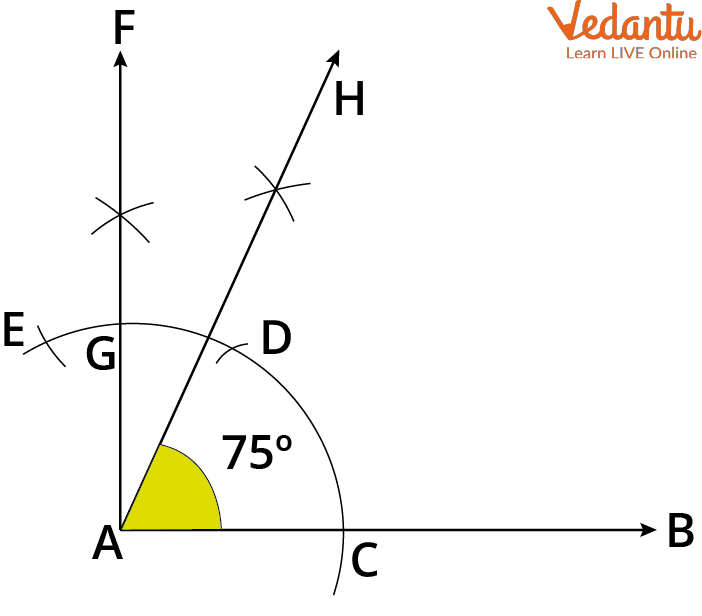




How to Draw 30°, 60°, 90°, and 120° Angles Precisely
Angles are everywhere in geometry problems. This article will teach you how to construct the angles you need for many different types of geometric problems. construction of angles is everywhere in geometry problems. this article will teach you how to construct the angles you need for many different types of geometric
Construction of Vertical Angles
A vertical line is a line that is perpendicular (At a right angle) to the horizontal level ground. If you have two lines on the same plane intersecting, you draw a diagonal of one line to the other. If they intersect perpendicularly, the lines form vertical angles on each side of the points of intersection.
Construction of Supplementary Angles
Constructing the angle of a line going through 90 degrees is easy if you know how to construct perpendicular lines. If two lines intersect creating a "T" shape, you draw two lines from the top of one line to the bottom of the other. The angles formed are supplementary.
Construction - Step by Step Representation
Construction of an angle can be broken down into a couple of steps:
1) Draw a ray, and
2) draw a line perpendicular to that ray. Then, set your compass point at the vertex of the angle you want to draw and extend its legs so they cross one another.
Use those intersection points as the centre of your circle, and construct your angle. It can be helpful to use a ruler for this, but if you do it correctly the compass should already be in the right place. With the help of the construction of any angle, you will be able to solve problems in geometry.
Constructing 30, 60, 90, 120 Degree Angles
One of the most important aspects of geometry is constructing angles. Understanding the basics of this is very important and thus one must try and learn this properly.
1. Constructing a 60 - Degree Angle:
In an equilateral triangle, all the angles are equal and they are equal to 60° in size. Thus, to draw 60°, we need to construct an equilateral triangle.
Step 1: Draw the arm PQ.
Step 2: Then place the point of the compass at P and draw an arc such that it passes through Q.
Step 3: Now place the point of the compass at Q and draw an arc such that it passes through P. The arc drawn at this step should cut the arc drawn in the above step at R.
Step 4: Now joining P to R. This angle measures 60° as the triangle PQR formed is equilateral.
2. Constructing a 30° Angle:
We know that 30° is half of 60°. So we can apply this knowledge to construct a 30° angle.
Step 1: To construct an angle of 30°, we first need to construct an angle of 60° and then further bisect it.
Step 2: Draw the arm PQ
Step 3: Then place the point of the compass and then draw an arc that passes through Q.
Step 4: Place the point of the compass at Q and then draw the arc which cuts the arc drawn at the above step at another point R.
Step 5: With the compass at Q, draw another arc near the point T as shown in the figure.
Step 6: Now with the point of the compass at R, draw another arc to cut the arc drawn at step 5 at T.
Step 7: Now join the point T to the point P. Now the angle QPT is 30°
3. Constructing a 120° Angle:
120° angle can be constructed using the logic that 60° + 120° = 180°. Thus, we can understand that to construct 120° we can construct 60° angle and then further extend one of its arms as shown below in the figure.
4. Constructing a 90° Angle:
To construct a 90° angle, there are two ways. The first one is by bisecting a straight angle and the other step is given below.
Step 1: First draw the arm PA.
Step 2: Now place the point of the compass at P and then draw an arc that cuts the arm at Q.
Step 3: Now place the point of the compass at Q and draw an arc that has a radius similar to the radius of PQ. This arc must cut the arc which is drawn in the above step at a point R.
Step 4: Now place the point of the compass at R and draw an arc of the radius which is similar to the radius of PQ to cut the arc which is drawn at step 2 at another point S.
Step 5: With the point of the compass at R, draw another arc of radius the same as the radius of PQ near the point T as shown in the figure below.
Step 6: With the point of the compass at S, draw an arc of radius similar to the radius of arc PQ and cut the arc which was drawn at step 5 at the point T.
Step 7: Join T to P using a scale. The angle APT formed measures 90°.
Constructing Angle Bisectors
By making angle bisectors for an angle, one can divide the angle precisely in half. A bisector divides an angle into two equally sized parts. Angle bisector construction results in a line that provides two congruent angles for a given angle. For instance, when an angle bisector is built for a $75^\circ$ angle, it divides the angle into two identical angles, each of which is $35^\circ$. Angle bisectors can be created for acute, obtuse, and right angles as well.
Compass Use to Construct an Angle Bisector
A line that divides an angle into two equal halves is known as an angle bisector. If the angle's measurement is known, we just need a protractor, a ruler, a pencil, and a math compass to construct an angle bisector geometrically. An angle bisector can divide any angle into two equal parts. Let's think about the angle AOB displayed below.
Keep in mind that the angle's magnitude is not specified here. Therefore, we can construct the angle bisector without using a protractor.
To create an angle bisector, follow the procedure given below:
Draw two arcs with O as the centre, spanning any radius width, so they intersect the rays OA and OB at places C and D, respectively. Since these are the radii of the same circle, OC = OD.
Draw two arcs with centres at C and D so that they connect at a place called E while maintaining the same distance between the compass's legs (in the image).

Angle Bisector
Because the two arcs drawn in this phase have the same radius, take note that CE = DE.
Join the Ray OE. This is the necessary angle bisector of angle AOD.
Construction of Angles
Let's practise making angles with a ruler and compass. In the methods below, we will first create a $90^\circ$ angle and then create an angle bisector to divide the $90^\circ$ into two equal parts, giving us a $45^\circ$ angle.
Sketch an AB ray.
Draw a semicircular arc that touches the line segment AB and label it Q using A as the centre and any width as the radius.
Draw another arc with Q as its centre and designate this point as D, but leave the radius unchanged.
Carry out the previous step with D as the centre and identify the drawn arc as E.
Now, create arcs that meet each other at a point and name it F, using the same radius and the centres E and D.
Finally, connect points A and F. This line, also known as the perpendicular line, forms a $90^\circ$ angle with the line segment AB.
Write P at the semicircular arc's intersection with the AF line.
Now, using the same radius as in step 2, draw two arcs with the centres P and Q. Identify R as the intersection of these arcs. Connect points A and R. Now, RAB and FAR are both $45^\circ$.

Angle $45^\circ$
How to Construct an Angle of 75 Degrees?
The following are the steps to construct $75^\circ$ angle.
Sketch an AB ray. Draw an arc with any radius that passes through A and AB at C.
We draw an arc with C as the centre and the same radius that cuts the first arc at D. We then create an arc with D as the centre and the same radius that cuts the first arc at E.
We draw two arcs with the same radius and centres at E and D intersecting at F. Draw a line AF. Line AF and line segment AB intersect at a $90^\circ$ angle.
Mark the line AF's intersection with the semicircular arc as G in step 4. Draw two arcs again, cutting each other at H, using G and D as the centres. We now join AH. HAB is $75^\circ$ angle.
The following diagram illustrates how to draw 75-degree angle with a compass.

75 Degree Angle
Example Problem
1. Use a ruler and compass and construct a triangle ABC. in the triangle, AB = 5 cm, angle BAC = 60° and AC = 4.5 cm. Also, measure the angle of angle ABC and angle ACB and calculate the angle sum of ABC.
Solution
Step 1: First draw the line AB which is 6m long.
Step 2: Now use a compass to construct a 60° angle at point A.
Step 3: Use the ruler to find C such that AC is 4.5 cm long.
Step 4: Now, join B to C.
The triangle ABC formed is the required triangle.
Now, for the next part, we can use a protractor to find the rest of the angles.
Thus we can conclude that,
Angle ABC = 55°
Angle ACB = 65°
Thus, the angle sum of the triangle ABC = 60° + 55° + 65° = 180°
Conclusion
This article has shown you how to construct many different angles. Angle construction is what you need to complete many geometry problems. This article provides the steps needed to construct any angle you might find in geometry. construction is a very useful tool in mathematics. It is what you need to complete many geometry problems.
This article provides the steps needed to construct any angle you might find in geometry. Construction is a very useful tool in mathematics. With the help of the construction of angles, students can solve any question related to the construction of angles and score very good marks in examinations.
FAQs on Construction of Angles Made Easy
1. What is meant by the construction of an angle in geometry?
In geometry, the construction of an angle refers to the process of accurately drawing an angle of a specific measure using only a compass and a straightedge (ruler). This method does not involve using a protractor for measurement. It relies on fundamental geometric principles, such as creating arcs and bisecting lines and angles, to achieve a precise result.
2. What are the essential tools required for constructing angles?
To accurately construct angles as per geometric rules, you primarily need two tools:
- A Straightedge (Ruler): Used for drawing straight line segments. It is not used for measuring length.
- A Compass: Used for drawing circles and arcs of a fixed radius. It is the key tool for transferring lengths and creating points at specific distances.
A sharp pencil is also necessary to ensure all lines and arcs are precise and clear.
3. How do you construct a 90° angle using only a compass and ruler?
Constructing a 90° angle involves creating a perpendicular bisector. Here are the steps:
- Draw a straight line and mark a point 'O' on it.
- With 'O' as the centre, draw a semicircle that intersects the line at two points, say 'A' and 'B'.
- With a radius more than the length of 'OA', place the compass at 'A' and draw an arc above the line.
- Using the same radius, place the compass at 'B' and draw another arc that intersects the first one at a point 'C'.
- Join the point 'C' to 'O'. The angle ∠COB (or ∠COA) is exactly 90°.
4. What are the steps to construct a 45° angle?
A 45° angle is created by bisecting a 90° angle. First, you must construct a 90° angle using the standard method. Let's say the 90° angle is ∠AOC. The steps to bisect it are:
- Place the compass point at the vertex 'O' and draw an arc that cuts the two arms of the angle, 'OA' and 'OC', at points 'P' and 'Q' respectively.
- With 'P' as the centre and a radius more than half of PQ, draw an arc.
- With 'Q' as the centre and the same radius, draw another arc that intersects the previous one at a point 'D'.
- Draw a line from the vertex 'O' through 'D'. The angle ∠DOC is 45°.
5. How can you construct a 75° angle step-by-step?
A 75° angle is constructed by combining a 60° and a 15° angle (which is half of 30°). The most common way is to bisect the angle between 60° and 90°.
- First, construct a 90° angle and a 60° angle on the same baseline and vertex. Let the ray for 60° be OX and for 90° be OY.
- The angle between these two rays, ∠XOY, is 30°.
- Now, bisect this 30° angle. Place the compass on the points where an arc from 'O' intersects OX and OY, and draw intersecting arcs.
- Draw a line from the vertex 'O' through this intersection point. This new ray creates an angle of 75° (60° + 15°) from the baseline.
6. Why is using a compass for construction considered more fundamental than using a protractor?
Using a compass and straightedge is fundamental because it is based on Euclidean geometry's axioms, which involve creating figures from first principles without relying on pre-calibrated measuring tools. A protractor is a measuring device that assumes the existence of degrees and can introduce measurement errors. Compass constructions, on the other hand, are a logical proof that an angle of a certain measure can be created, making it a core concept in pure geometry.
7. What is the mathematical principle that makes angle bisection work?
The principle behind angle bisection is the creation of two congruent triangles. When you bisect an angle, you create a point that is equidistant from the two arms of the original angle. By drawing a line from this point to the vertex, you divide the original triangle formed by your construction arcs into two smaller triangles. These two triangles are congruent by the Side-Side-Side (SSS) congruence rule, which proves that their corresponding angles are equal. Therefore, the original angle is split into two equal halves.
8. Can any angle be constructed using only a compass and straightedge? Explain why or why not.
No, not every angle can be constructed using only a compass and straightedge. Only angles that can be derived from a 60° angle (which comes from constructing an equilateral triangle) through a finite number of bisections and additions/subtractions are constructible. For example, you can construct 60°, 30°, 15°, 90°, 45°, etc. However, a famous unsolvable problem in geometry is the trisection of an angle, which proves that an angle like 20° (one-third of 60°) cannot be constructed with these tools.
9. How is the skill of constructing angles applied in building other geometric shapes?
The construction of angles is a foundational skill required for more complex constructions. For instance:
- Constructing Triangles: To construct a triangle given two sides and the included angle (SAS criterion), you must first accurately construct the required angle between the lines representing the sides.
- Constructing Polygons: Constructing regular polygons like hexagons or octagons requires constructing specific interior angles (e.g., 120° for a hexagon).
- Constructing Tangents: To draw a tangent to a circle from an external point, you need to construct a 90° angle.
Essentially, accurate angle construction is a building block for almost all precise geometric drawings.

















